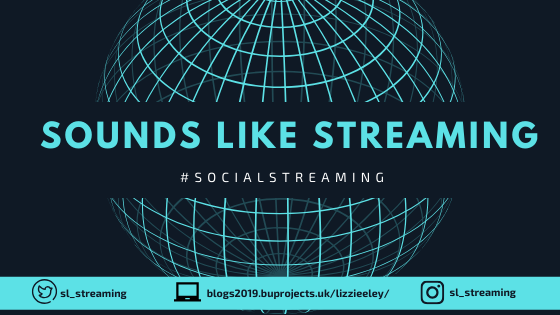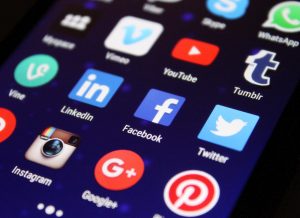 Streaming music has completely transformed the way musical artists make money from their music. No longer are the majority of people interested in being one of the first to purchase their favourite artists new CD in store. Instead, music fans have turned to streaming services to listen to music which has resulted in a significant decrease of profit for artists as they receive very little per stream. Due to music streaming, artists are beginning to change their music in order to fit in with the streaming world. More than ever, they are reliant on selling their merchandise and concert tickets rather than focusing on the main attraction, their music.
Streaming music has completely transformed the way musical artists make money from their music. No longer are the majority of people interested in being one of the first to purchase their favourite artists new CD in store. Instead, music fans have turned to streaming services to listen to music which has resulted in a significant decrease of profit for artists as they receive very little per stream. Due to music streaming, artists are beginning to change their music in order to fit in with the streaming world. More than ever, they are reliant on selling their merchandise and concert tickets rather than focusing on the main attraction, their music.
Surely as the artists are the ones making the music that we all love they should be the ones receiving the largest proportion of revenue? Wrong.
The launch of Spotify in 2008 saw a breakthrough for the music industry, one which benefited both artists and their fans. The service offered an unlimited variety of songs in one easily accessible place, as well as paying the artists very well for their contribution of music. All in all, the introduction of mainstream streaming sites were extremely beneficial for artists. However, these benefits were not long term and as expected, things began to take a turn for the worse.
Negatives of Music Streaming for Artists
Music streaming sites are easily accessible and affordable for the millions of users who use them as part of everyday life. However, for musical artists there is another side to the story. You would think that artists received a high amount of profit from providing streaming services with their music, unfortunately for them this is not the case. Streaming site superstar Spotify has found itself in moments of chaos with many musical artists such as Taylor Swift, Shawn Mendes and Justin Timberlake. This is mainly because the benefits of streaming for the artists are not fully taken into consideration.
A recent Twitter post particularly caught my eye as it makes an extremely valid point about the importance of money per streams for artists. The post suggests that if 1,000 people stream a song on Spotify the artist only gets paid a small £4, whereas if those 1,000 people were to pay £1 to have an unlimited access to stream the song, the artist would get paid £1,000. This is similar to CD sales, the artist will benefit far more from selling copies of their CDs than using streaming sites to provide their fans with their music.
Positives of Music Streaming for Artists
Although there are many evident negatives linked to artists’ music being accessible on streaming sites, we must not forget the underlying positives. Streaming services allow a platform in which artists can share their music, both old and new releases, with millions of people around the world. For new artists, streaming is extremely important as part of introducing themselves into the music industry as people tend to find new music through streaming online and then share the music with their friends and family. Spotify also recommend new music through a ‘Recommended For You’ playlist every Friday which tends to include new upcoming artists who are fresh to the music scene. This word of mouth can significantly benefit new artists and increase their fan base. More artists are becoming exposed to a wider range of audiences as millions of people are able to access their music free of charge or for a small fee. Exclusive content can be found on streaming sites such as podcasts and extra musical content that CDs/vinyls do not offer, everyone’s a winner!
In general, 70% of a streaming service’s overall revenue is paid to the creators. According to Billboard this percentage is “larger than a typical record store, and in line with what iTunes pays on digital downloads”. Sites such as Apple Music have aided the growth of many artists in the music industry such as Khalid and Chance The Rapper. With help from the site, Chance’s album ‘Coloring Book’ became the first streaming-only album to enter the Billboard top 200.
So… overall have music streaming sites had a negative or a positive impact on musical artists?
Streaming sites may have been extremely popular with artists in the beginning when they were first introduced as they were an exciting new platform to share music, offering a decent pay too. However the harsh reality of using streaming sites for artists is represented through the minimal pay of an astounding £0.0038 per stream! Is it really worth it, especially for upcoming new artists who are just starting out.
Come back next week for a brand new blog and Happy Christmas! I hope you enjoy your Christmas and listen to lots of Christmas tunes!








 Streaming music has completely transformed the way musical artists make money from their music. No longer are the majority of people interested in being one of the first to purchase their favourite artists new CD in store. Instead, music fans have turned to streaming services to listen to music which has resulted in a significant decrease of profit for artists as they receive very little per stream. Due to music streaming, artists are beginning to change their music in order to fit in with the streaming world. More than ever, they are reliant on selling their merchandise and concert tickets rather than focusing on the main attraction, their music.
Streaming music has completely transformed the way musical artists make money from their music. No longer are the majority of people interested in being one of the first to purchase their favourite artists new CD in store. Instead, music fans have turned to streaming services to listen to music which has resulted in a significant decrease of profit for artists as they receive very little per stream. Due to music streaming, artists are beginning to change their music in order to fit in with the streaming world. More than ever, they are reliant on selling their merchandise and concert tickets rather than focusing on the main attraction, their music.